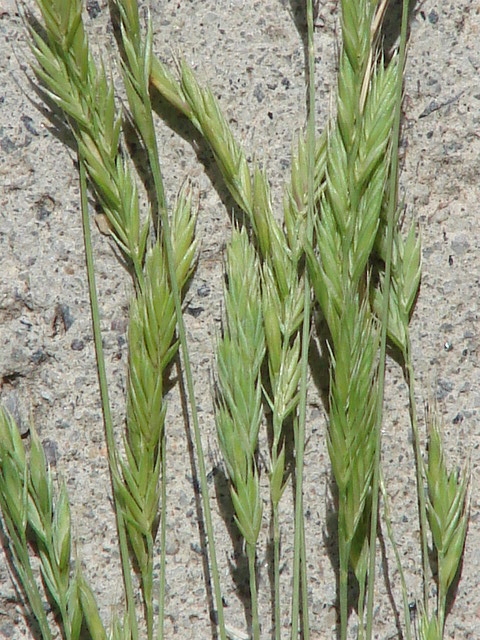Vulpia octoflora
Vulpia bromoides
six-weeks fescue
brome fescue
Sheaths open;
leaf blades involute, up to 1.5 mm. broad;
auricles lacking;
ligules membranous, erose, 0.2-0.6 mm. long.
Inflorescence a narrow panicle with short, erect branches and pedicles 3-10 cm. long;
spikelets 3- to 6-flowered;
glumes unequal, the first 3-6 mm. long, 1-nerved, the second 5-8.5 mm. long, 3-nerved;
lemmas glabrous, about 6.5 mm. long, with a terminal awn 5.5-13 mm. long;
stamens usually 1, the anther purple; sometimes the lowest floret pistillate, and the other florets with 2-3 anthers.
Utricle
Vulpia octoflora
Vulpia bromoides
Occurring chiefly east of the Cascades crest in Washington; Alaska to California, east to the Atlantic Coast.
Occurring on both sides of the Cascades crest in Washington; southern British Columbia to California, east to the Rocky Mountains, southern Great Plains, and eastern North America.
- Local floras:
BC,
CA,
OR,
WA
- Local Web sites:
CalFlora,
CalPhotos,
Flora NW,
PNW Herbaria
WildflowerSearch
iNaturalist (observations)
USDA Plants Database
- LBJ Wildflower Center
- SEINet
- Plants of the World Online
- Encyclopedia of Life
- Wikipedia
- Google Image Search
- Local floras:
BC,
CA,
OR,
WA
- Local Web sites:
CalFlora,
CalPhotos,
Flora NW,
PNW Herbaria
WildflowerSearch
iNaturalist (observations)
USDA Plants Database
- LBJ Wildflower Center
- SEINet
- Plants of the World Online
- Encyclopedia of Life
- Wikipedia
- Google Image Search



